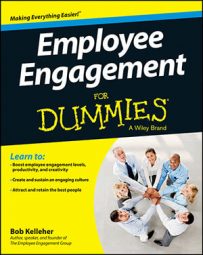The only way firms can boost recognition is by formally introducing a recognition program — one that is measurable and has meaning. A 2012 survey by the Society for Human Resource Management (SHRM) notes the following:
When asked whether employees were satisfied with the level of recognition they receive for doing a good job, 34 percent of companies with formal recognition programs answered yes, compared to 18 percent of companies without such a program.
When asked whether managers and supervisors effectively acknowledge and appreciate employees, 55 percent of companies with formal recognition programs answered yes, compared to 36 percent of companies without such a program.
When asked whether employees were rewarded according to their job performance, 64 percent of companies with formal recognition programs answered yes, compared to 36 percent of companies without such a program.
When designing your own recognition program, you'll want to consider the following:
Be sure your recognition program is in alignment with your department's and your organization's goals.
Be clear on your overall objectives. That will help you determine what behaviors to recognize.
Decide what specific behaviors, events, and episodes you want to recognize. Again, this will depend on your objectives.
Establish and communicate your recognition guidelines. Your employees need to know what they need to do to be recognized. Make your guidelines fair and consistent, while launching a fun and exciting communication plan.
Establish a budget. Remember that engagement isn't free. Well, the same goes for recognition. Sure, some recognition techniques are gratis, but the best recognition programs are those that have been budgeted for. The recognition awards themselves can be nominal in nature (again, this is not a bonus program), but you do need a budget to give the program credibility. (For more on establishing a budget, see the next section.)
Define your recognition “currency.” Will you give cash? Gift cards? Points? Or maybe you'll go with merchandise — for example, mugs, T-shirts, or other goodies featuring your company's logo.
Establish the value of the reward. What do you see as a typical reward value? If you're not sure, try $100 or less. Anything higher will bump into traditional bonus/reward programs.
The recognition is what matters, not the monetary value. You'll get more bang for your buck by recognizing two deserving employees with $50 gift cards than by recognizing one deserving employee with a $100 gift card.
Define and communicate your approval process. The best programs are simple and non-bureaucratic, allowing for some level of peer-to-peer and team recognition along with the customary manager-to-employee kudos.
Add “recognition” as an agenda item to your weekly department meeting. This should happen every week, effective immediately. Moreover, it should top the agenda. That way, you ensure that the topic is covered. This will also help to make recognition part of your cultural DNA. Plus, recognizing your top workers is much more likely to get people motivated than the usual moan and drone agenda items!
Measure and communicate your recognition results. You get the behavior you measure. Successful programs, including recognition programs, measure both usage and the return on investment (ROI).

